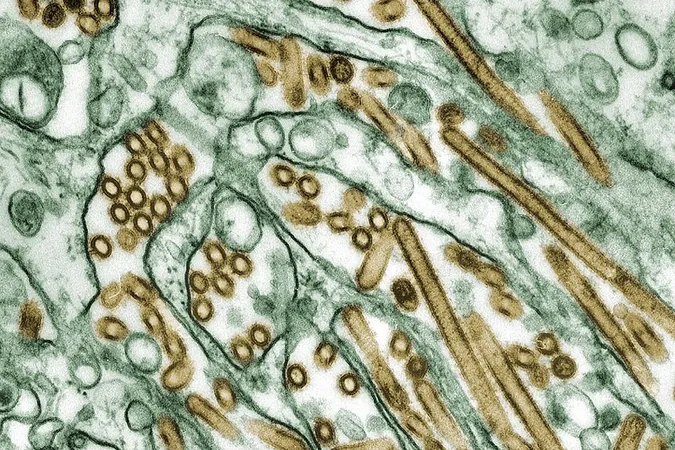
Revolutionary Breakthrough: Scientists Expand Life's Genetic Alphabet to Engineer Novel Proteins!
2024-09-17
Introduction
In a groundbreaking study, researchers at Scripps Research have shattered the long-standing belief that proteins can only be made from 20 standard amino acids. An exciting new method allows for the incorporation of non-canonical amino acids—essentially expanding the genetic alphabet from which life can draw its building blocks. This research, recently published in Nature Biotechnology, marks a significant step forward in the fields of bioengineering and drug discovery.
The Innovation
Dr. Ahmed Badran, the lead author of the study, explained that this innovative approach utilizes four RNA nucleotides, as opposed to the traditional three, to encode each additional amino acid. This expansion opens up a world of possibilities, enabling the creation of proteins with tailored functions that can impact a wide range of industries from medicine to biotechnology.
Challenges in Protein Synthesis
Typically, for protein synthesis, cells read RNA in sets of three nucleotides known as codons, each corresponding to a specific amino acid. However, researchers previously faced substantial challenges when attempting to introduce new amino acids into existing proteins, often requiring an extensive overhaul of the entire genome—a Herculean task fraught with unpredictability.
The Breakthrough Method
Badran’s team aimed for a more straightforward solution that would allow for selective incorporation of novel amino acids into targeted sites within proteins without disrupting normal cellular processes. Their discovery, a four-nucleotide codon, bridges this gap and offers precise control.
Natural Evolution and Mechanism
Interestingly, this mechanism of utilizing four-nucleotide codons has naturally evolved in certain organisms, such as bacteria, notably as a resistance strategy against drugs. Understanding the conditions under which these codons can be effectively read by cells, the researchers pinpointed that surrounding sequences deeply influence this structural innovation.
Experimental Success
In a series of successful experiments, the Scripps team managed to reprogram a specific gene to utilize a new four-nucleotide codon. They demonstrated that by providing the cell with the right four-nucleotide tRNA, alongside densely packed three-letter codons, they could coax the cell into incorporating non-canonical amino acids with remarkable efficiency. They went on to produce over 100 new cyclic peptides (macrocycles), showcasing the exciting potential of this method in drug development.
Future Implications
According to Dr. Badran, “These cyclic peptides resemble bioactive molecules prevalent in nature, and by harnessing the programmability of protein synthesis with our expanded toolkit, we can innovate uniquely functional molecules that hold promise for drug discovery.”
Broader Impact
The implications of this work extend far beyond theoretical applications. This newly developed method simplifies the process of incorporating diverse amino acids and enhances the ability to engineer proteins with unprecedented functional capabilities. The potential for creating novel therapeutics or re-engineering existing proteins for enhanced performance is enormous.
Applications Across Fields
Additionally, this technique paves the way for applications in sectors such as food science, environmental monitoring, and even energy production. The research team is optimistic about sharing their findings with the broader scientific community, positioning them to contribute to a new era of protein engineering.
Conclusion
As New Scientist aptly put it, "The genetic code is no longer a limitation, but rather a springboard for innovation!" Scientists envision an exciting future where the boundaries of biology are continually pushed, unlocking possibilities that could revolutionize medicine, manufacturing, and beyond.





 Brasil (PT)
Brasil (PT)
 Canada (EN)
Canada (EN)
 Chile (ES)
Chile (ES)
 España (ES)
España (ES)
 France (FR)
France (FR)
 Hong Kong (EN)
Hong Kong (EN)
 Italia (IT)
Italia (IT)
 日本 (JA)
日本 (JA)
 Magyarország (HU)
Magyarország (HU)
 Norge (NO)
Norge (NO)
 Polska (PL)
Polska (PL)
 Schweiz (DE)
Schweiz (DE)
 Singapore (EN)
Singapore (EN)
 Sverige (SV)
Sverige (SV)
 Suomi (FI)
Suomi (FI)
 Türkiye (TR)
Türkiye (TR)